Where to place your antenna for ATC recordings
Check out our previous blog posts:
- Blog 3: What is the best SDR hardware choice for ATC
- Blog 4: How to setup your SDR for clean ATC audio
Let’s take a look on where to mount your antenna and what to do to check if your place is good or not. The first step is to find out the elevation (or altitude) profile between your place and the airport. We expect that the transmitting antennas are on the airport tower or nearby. It is good to check where exactly the airports’ antennas are placed. There should not be hills and other obstacles in between. The best option is that you have direct visibility. Any obstacles will block the signal coming from the Tower. You will hear the pilots well, but not the ground. We share two cases: LKTB and LKPR airports.
LKTB
The LKTB is a small “international” airport.
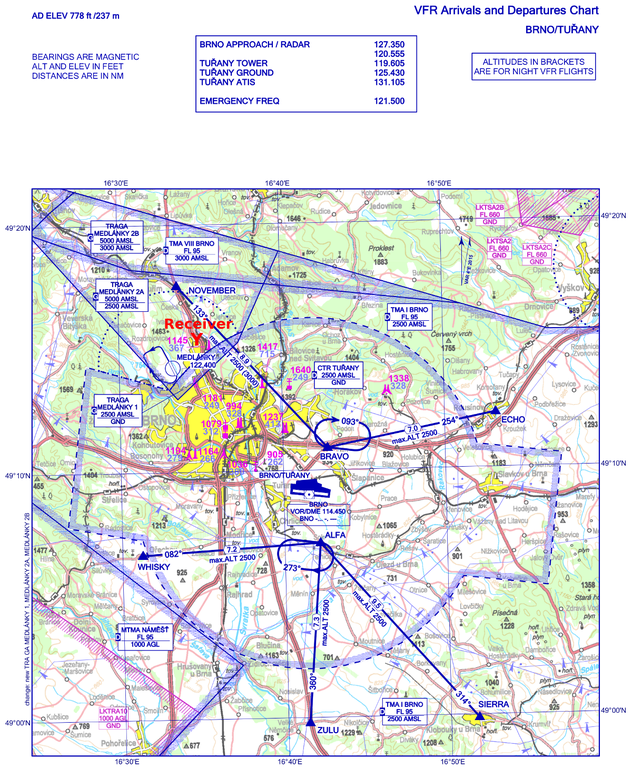
We were lucky that one of our project partners lives in a house with a good enough position. The elevation profile does not look very bad.
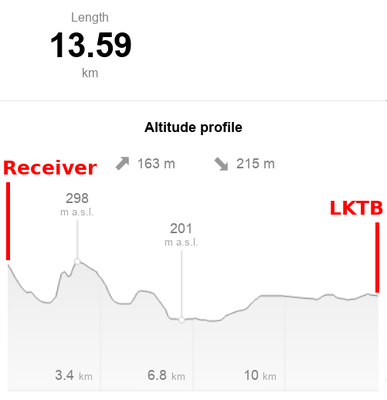
The distance is about 14 kilometers and there is a hill in between which is not very high. There is no direct visibility. On the other hand, he lives “under” one of the approaches way November - Bravo. We mounted the Watson antenna on the roof (and also experimented with the Sirio antenna - see this post for details).
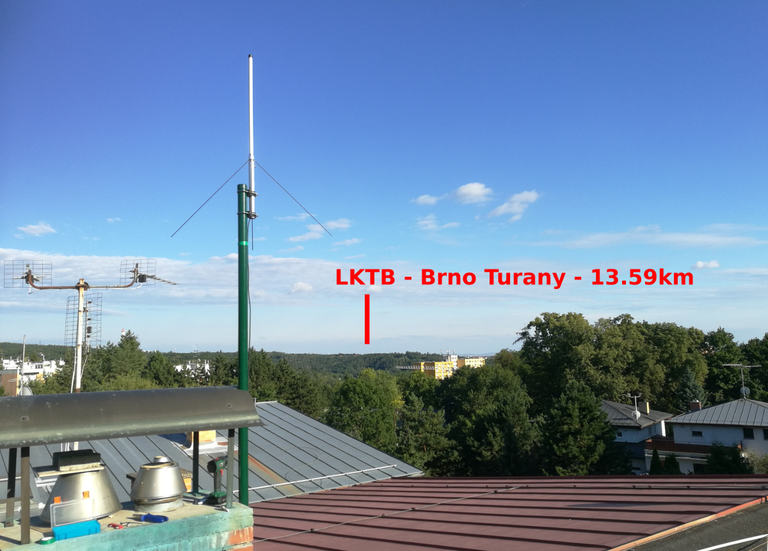
To make the long story short, it works. We got good results with the Watson antenna and the RSP1A. However the combination of Sirio antenna and RTL-SDR was not so successful. The amount of good quality speech was significantly lower compared to Watson + RSP1A. So if you are in similar conditions, think about a more expensive (and better) receiver and antenna.
LKPR
LKPR is the largest airport of Czech Republic.
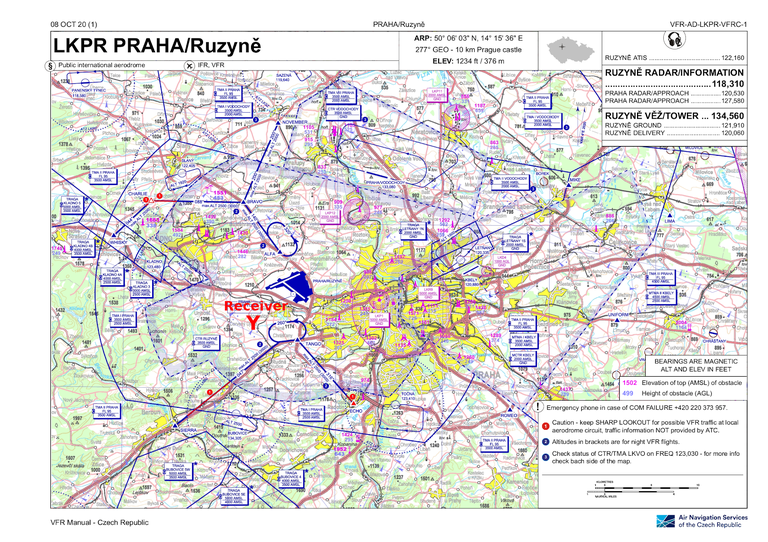
Here we were more lucky. Our data feeder lives in the ideal position.
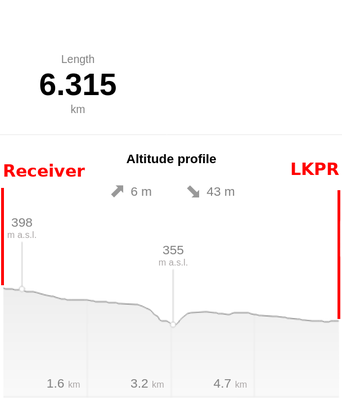
The signal there is strong so all combinations of the devices worked well. The only problem is, that part of one runway is below the horizon so we receive low quality signals from airplanes in that position.
Notes: If you install the antenna on your roof, be sure you place it as high as possible from your metal roof. Also be sure it is well grounded. The last thing you want is to let a lightning bolt hit your antenna. If there is a thunderstorm near you, you should unplug the coaxial cable from your SDR receiver (and ideally throw the end outside). A close lightning can induct high voltage and the free cable connector may be dangerous. Please search the internet for a proper solution. Here is a nice solution for ADS-B antennas.
